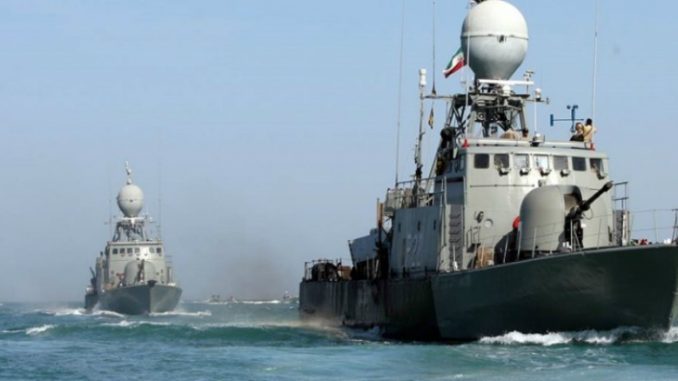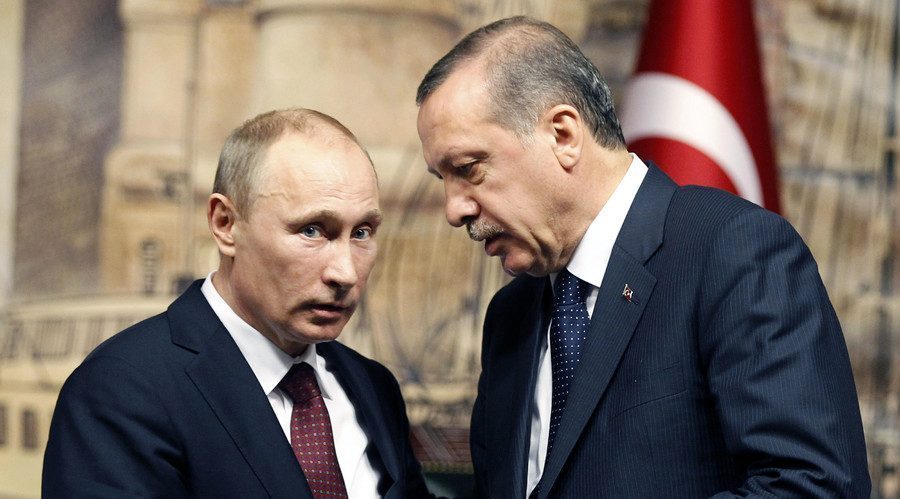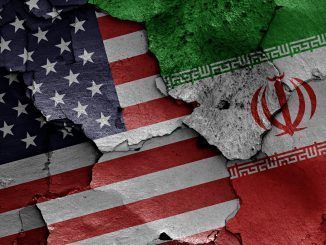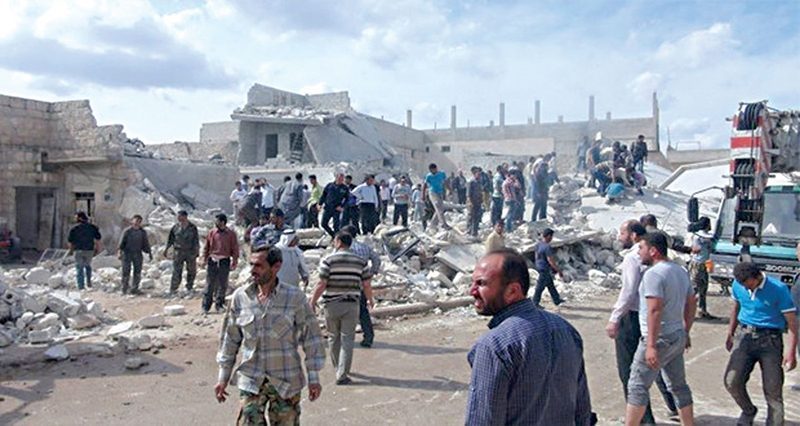
Iran concluded its new naval drills, which took place at the mouth of the Gulf and the Indian Ocean, with testing new firepower systems amid increasing tension with the US and the regional powers.
Tuesday marked the last day of the final phase of the maneuvers codenamed Velayat 95, which have been underway since early February across the Strait of Hormuz, Sea of Oman and the northern part of the Indian Ocean.
Navy Commander Rear Admiral Habibollah Sayyari announced the beginning of the maneuver, code-named Velayat 95, on Sunday.
“The aim of the Velayat 95 drill is to upgrade the country’s defensive capabilities and send Iran’s message of peace and friendship to the regional countries,” the Navy chief said aboard the Sahand warship.
Navy ships, submarines and helicopters took part in the drills across an area of about 2 million square kilometers (772,000 square miles) in addition to Iranian marines forces, according to Iranian media.
New missiles and Torpedos tested
The Iranian Navy has test-fired its Nasr sea-launched cruise missile during ‘Velayat 95’ naval exercises, Defense Minister Hossein Dehghan said.
The Nasr was successfully launched and hit the predetermined targets, the minister added, according to Mehr news agency.
Tasnim news agency meanwhile reported that the Iranian Navy had also successfully test-fired an advanced domestically-made laser-guided missile system dubbed Dehlaviyeh, “specialized in targeting vessels and ships.”
The Dehlaviyeh anti-ship missile was reportedly tested for the first time and hit the target as well.
The newest torpedo to join the Iranian Navy’s arsenal, which name is Valfajr, has been successfully test-fired.
“The torpedo was fired from the Navy’s Qadir submarine towards a surface vessel, destroying its target,” according to Iranian media reports.
Similar simulated tasks of target location and destruction were performed by various other submarines dispatched to within 100 kilometers (62 miles) off the country’s southern coast.
Separately, anti-submarine helicopters of naval defense squadrons, which serve the Navy’s strategic operations, practiced patrolling missions, hitting and destroying sub-surface targets.
Different types of coast-based and sea-based drones have been providing surveillance and reconnaissance services to this stage of the drills, relaying the information gathered from mock hostile targets outside territorial waters to relevant Navy units, the reports finalized.
Tension regionally and globally
The U.S. Navy’s 5th Fleet, based in Bahrain, declined to comment on the exercise or discuss if it had any plans to monitor the drill.
The move comes just two weeks after Western navies held a series of drills off the coast of Iran last week, in a show of force in light of increased Iranian harassment of foreign military vessels.
The exercises, dubbed “United Trident,” were led by the United Kingdom and included ships from the US, France and Australia. The navies practiced fighting off enemy aerial incursions and mine clearing, as well as live fire drills.
The final drill featured 13 ships from the allied navies sailing in formation, with helicopters flying overhead.
Last month, Iranian Navy Commander Rear Admiral Habibollah Sayyari was dismissive of the show of force close to Iranian waters, warning the Western navies against encroaching on Iranian waters, saying, “This is our red line.”
This threatening comments and show of power military drills is expected to increase the tension with the US and make the Trump administration impose new sanction on Iran, though the Iranian military says these drills doesn’t violate the nuclear deal terms.
Trump has said during his election campaign that Iran’s nuclear deal as “disastrous” and said it would be his “number one priority” to dismantle it.
These threats became clearer after Trump’s inauguration, as he signed an executive order temporarily barring thousands from seven countries in the Middle East and Africa, including Iran, from obtaining visas to travel to the United States.
The tension was raised again in issues related to Iran’s ballistic program, as he said that “Iran is playing with fire” and announced that “we’re officially putting Iran on notice,” after Iran conducted a failed ballistic missile test.
In addition, Trump declared in January applying sanctions on 25 individuals and companies connected to Iran’s ballistic missile program and those providing support to Iran’s Islamic Revolutionary Guard Corps’ Quds Force.
Recently, US senators said plan to impose new sanctions on Iran over its ballistic missile program, while Israel and Saudi Arabia backed these measures and described Iran as the main sponsor of global “terrorism” and a destabilizing force in the Middle East.



